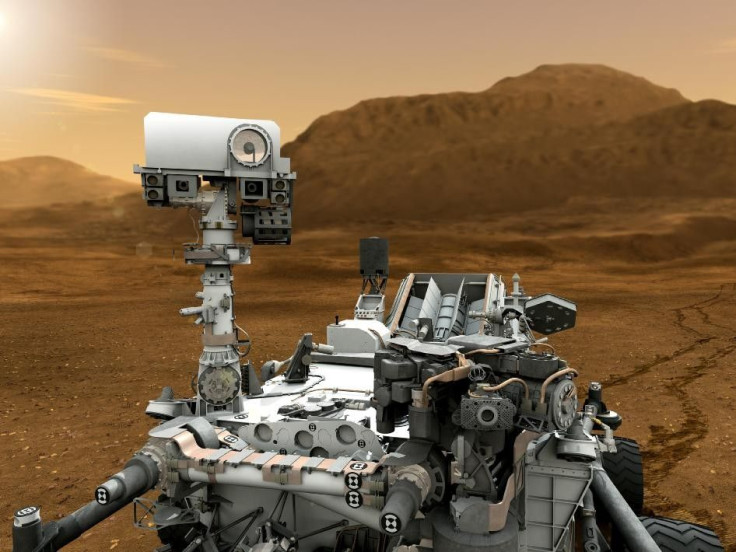Water On Mars: NASA's Curiosity Rover Discovers Water In Soil Samples

Soil samples collected by the NASA Mars Rover Curiosity contain small amounts of water. According to the researchers, two percent of the soil collected by Curiosity contains water. The latest findings by Curiosity is the latest evidence of water on the planet.
In addition to water, the soil samples, when heated, released carbon dioxide, oxygen and sulfur. The research was led by Laurie Leshin, from the Rensselaer Polytechnic Institute. Leshin said in a statement, "About 2 percent of the soil on the surface of Mars is made up of water, which is a great resource, and interesting scientifically." The findings were published in the journal Science.
Previously, NASA's other Mars rover, Opportunity, discovered mineral deposits from flowing water in 2011. More recently,the rover discovered evidence of flowing water near Cape York. Curiosity discovered evidence of a "wet and habitable" environment after drilling into rocks at "Yellowknife Bay" earlier this year.
The samples collected by Curiosity were analayzed by the Sample Analysis at Mars, SAM, instrument which contains a tunable laser spectrometer, a mass spectrometer and a gas chromotograph, notes the university. Curiosity's tunable laser spectrometer was recently used to analyze methane in the atmosphere of Mars, turning up no evidence of the gas in the process. Curiosity found the traces of water in the soil samples on its first try. "This is the first solid sample that we’ve analyzed with the instruments on Curiosity. It’s the very first scoop of stuff that’s been fed into the analytical suite," said Leshin. With more samples to analyze, Leshin is optimistic about what Curiosity may discover in future soil samples.
The soil sample, containing dirt, dust and fine soil, was collected in an area known as "Rocknest" and heated to 835 degrees Celsius. The researchers discovered a chloride and oxygen compound in the heated soil sample, believed to be chlorate or perchlorate. The discovery of this compound is interesting as it was previously observed only in higher-altitude locations on the planet.
Analysis of the soil samples has already led to some new insight in regards to the interaction between Mars' atmosphere and the surface of the planet. According to Leshin, after analyzing isotopes of hydrogen and carbon, same element but different number of neutrons, the dust on Mars is traveling around the planet and is also reacting with gases found in the atmosphere.
The findings could help future space colonists, says Leshin, as heating a scoop of Martian soil should yield some water. The soil samples from Mars are a good indicator of the composition of the surface of the planet. According to Leshin, "Mars has kind of a global layer, a layer of surface soil that has been mixed and distributed by frequent dust storms. So a scoop of this stuff is basically a microscopic Mars rock collection."
Curiosity also discovered more evidence of ancient water on Mars earlier this week. On its way to Mount Sharp, the rover stopped at a region known as "Darwin" and discovered sandstone deposited by flowing water.
© Copyright IBTimes 2024. All rights reserved.






















